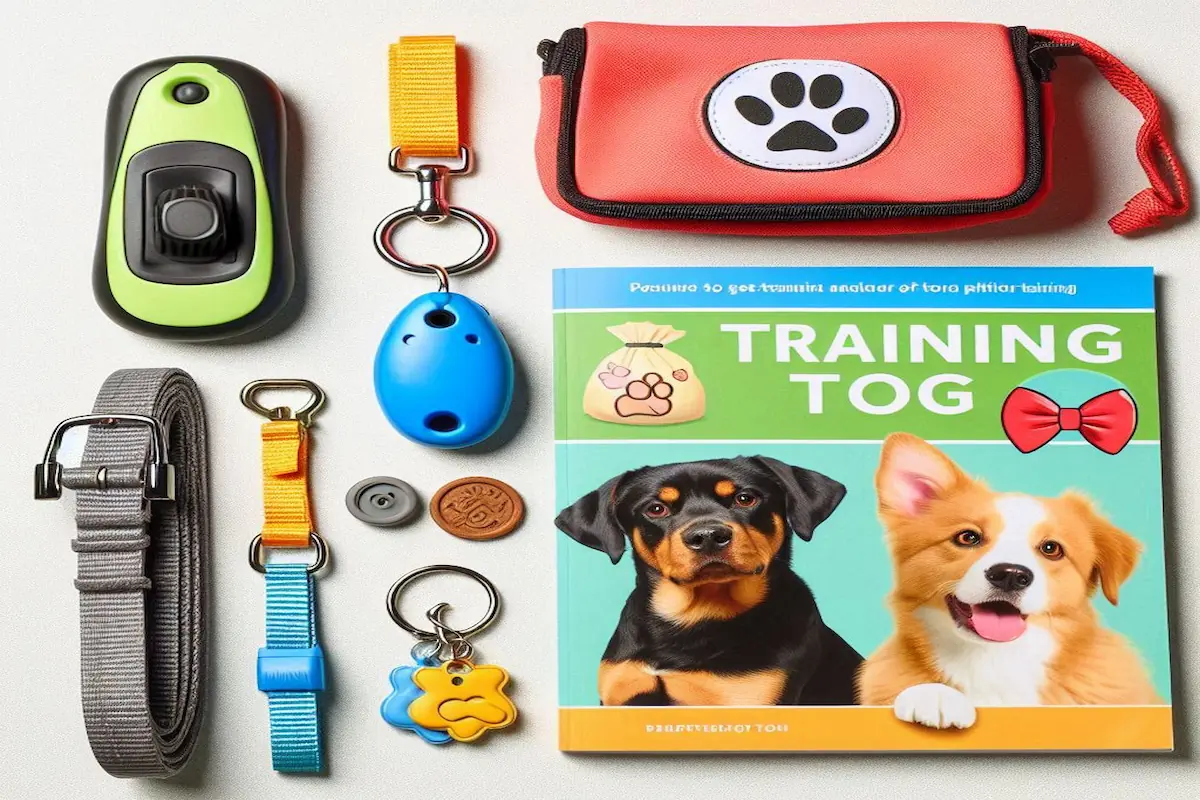Dog Training Essentials
1. Introduction
Training your dog isn’t just a nice-to-have; it’s an absolute necessity! Imagine your furry friend as a blank canvas, waiting for you to paint the picture of a well-mannered pet. Dog training essentials form the brush strokes that will define your dog’s behavior, safety, and happiness. Whether you’re a first-time dog owner or a seasoned pro, understanding these essentials can transform your pet from a mischievous pup into a cherished member of your family.
2. The Importance of Dog Training
Training your dog is the key to a harmonious household. A well-trained dog is not only safer but also more enjoyable to be around. Think of it like teaching a child to communicate; the clearer the communication, the better the relationship. Dogs that are trained tend to exhibit fewer behavioral issues and can adapt to different situations with ease. It’s not just about teaching commands; it’s about fostering trust and understanding between you and your pup.
Related: Advanced Dog Training Exercises: Elevate Your Pup’s Skills
3. Setting the Right Environment
Creating a positive training environment is crucial. This space should be free of distractions and filled with positive vibes. Use a quiet room or a secluded area in your yard for training sessions. Make sure to have all your tools ready, whether it’s treats, toys, or leashes. Think of this space as your dog’s classroom—structured, welcoming, and geared for learning.
4. Understanding Dog Behavior
Before diving into training, take a moment to understand your dog’s behavior. Every dog is unique, and what works for one may not work for another. Dogs communicate through body language and vocalizations. For instance, a wagging tail often signals happiness, while a lowered head might indicate fear. Familiarizing yourself with these cues will help you tailor your training approach. After all, knowing your student makes teaching much easier!
5. Essential Training Tools
Every good teacher needs the right tools, and the same goes for dog training. Here’s a quick rundown of the essentials:
- Collars and Leashes: A sturdy collar and leash are crucial for control during training.
- Treats: Use high-value treats that your dog loves to motivate them.
- Clicker: A clicker can mark the exact moment your dog performs the desired behavior.
- Training Pads: Useful for house training, especially for puppies.
With these tools in hand, you’re ready to start your training journey!
6. The Power of Positive Reinforcement
Positive reinforcement is the gold standard in dog training. Instead of scolding your dog for bad behavior, reward them for good behavior. This technique encourages your dog to repeat the actions that lead to rewards. Think of it as giving a gold star for good work; it boosts confidence and fosters a loving relationship. The more positive experiences your dog has, the more willing they’ll be to learn.
Related: How to Train Your Dog: Essential Tips for Pet Owners
7. Basic Commands Every Dog Should Know
Let’s get into the meat of training—teaching basic commands! Here are a few that every dog should master:
- Sit: This is often the first command dogs learn. It establishes control and is the gateway to many other commands.
- Stay: Teaching your dog to stay put can keep them safe in potentially dangerous situations.
- Come: A reliable recall command is crucial for your dog’s safety and your peace of mind.
Each command builds on the previous ones, so start with these foundational skills.
8. The Importance of Socialization
Socialization is vital for a well-rounded dog. Exposing your dog to different environments, people, and other animals helps them develop confidence and reduces fear-based behaviors. Begin socialization early, especially during the critical puppy months, but continue this process throughout your dog’s life. Think of it like giving your dog a passport to the world—every new experience is a stamp that enriches their life.
9. House Training Tips
Potty training can be one of the trickiest aspects of dog ownership, but with the right approach, it can also be one of the most rewarding. Here’s how to do it:
- Establish a Routine: Take your dog out at the same times every day. Consistency is key!
- Use a Designated Spot: Take your dog to the same place every time to help them associate the area with bathroom breaks.
- Reward Success: Praise and treat your dog immediately after they go outside to reinforce the behavior.
Accidents will happen, but patience and persistence are your best friends during this stage.
Related: Essential Dog Training Words Every Owner Should Know
10. Dealing with Behavioral Issues
Every dog has their quirks, and sometimes those quirks can turn into issues. Here’s how to tackle some common behavioral problems:
- Barking: Teach the “quiet” command and reward your dog when they stop barking.
- Chewing: Provide appropriate chew toys and redirect your dog when they start chewing on furniture.
- Jumping: Ignore your dog when they jump on you. Only give attention when they’re calm and have all four paws on the ground.
Understanding the root of these behaviors can also help you address them effectively.
11. Crate Training Essentials
Crate training can be incredibly beneficial for both you and your dog. It provides a safe space for your pet and helps with house training. To crate train effectively:
- Make It Comfortable: Add bedding and toys to make the crate inviting.
- Short Sessions: Start by leaving your dog in the crate for short periods, gradually increasing the time as they get used to it.
- Never Use as Punishment: The crate should be a positive space, not a place of punishment.
With patience and positive reinforcement, your dog will come to see the crate as their safe haven.
12. Advanced Commands for More Challenging Scenarios
Once your dog has mastered the basics, you can start teaching more advanced commands like:
- Leave It: This command is essential for keeping your dog safe from dangerous objects.
- Heel: Teaching your dog to walk beside you without pulling is a game-changer for enjoyable walks.
- Go to Place: This command helps direct your dog to a specific spot, whether it’s a bed or a mat.
These advanced commands not only enhance your dog’s skills but also make outings more enjoyable.
13. The Role of Consistency in Training
Consistency is the backbone of effective training. Use the same commands and signals every time to avoid confusing your dog. Keep training sessions short and sweet—around 5-10 minutes—so your dog stays engaged and doesn’t lose focus. It’s like training for a sport; regular practice leads to improvement!
14. Keeping Training Fun and Engaging
Training shouldn’t feel like a chore; it should be a bonding experience! Incorporate games into your training sessions, such as hide and seek with treats or agility exercises. Keeping it light-hearted will help your dog stay engaged and eager to learn.
15. Recognizing When to Seek Professional Help
Sometimes, despite your best efforts, you might hit a wall. If you notice persistent behavioral issues or if training feels overwhelming, don’t hesitate to seek professional help. A qualified dog trainer can provide personalized guidance and techniques tailored to your dog’s specific needs.
16. Training for Specific Situations
Training for specific situations—like car rides, vet visits, or meeting new people—can make a world of difference. Gradually introduce your dog to these scenarios, using positive reinforcement to help them feel comfortable. Think of it like preparing for a big event; practice helps alleviate anxiety.
17. Monitoring Progress and Adjusting Techniques
Regularly evaluate your dog’s progress and adjust your techniques as necessary. If something isn’t working, don’t be afraid to change your approach. Training is a journey, and it’s important to remain flexible. Celebrate small victories along the way!
18. Conclusion
Mastering dog training essentials can seem daunting at first, but with patience, consistency, and a sprinkle of love, you’ll be on your way to having a well-behaved furry friend. Remember, every moment spent training is an investment in your dog’s happiness and your peace of mind. So roll up your sleeves, grab those treats, and get started!
19. FAQs
Q1: How long does it take to train a dog?
A: The time it takes to train a dog varies based on factors like age, breed, and prior experience. Basic commands can take a few weeks to a few months to master.
Q2: Can older dogs be trained?
A: Absolutely! Older dogs can learn new tricks and commands, though they may require a bit more patience compared to puppies.
Q3: How often should I train my dog?
A: Aim for daily training sessions of 5-10 minutes. Regular short sessions are often more effective than infrequent long ones.
Q4: What if my dog doesn’t respond to training?
A: If your dog isn’t responding, evaluate your methods. Consider factors like distractions, your dog’s mood, and whether you’re using high-value rewards.
Q5: Is it okay to use aversive training methods?
A: Aversive training methods can lead to fear and anxiety in dogs, often resulting in more behavioral problems. Positive reinforcement is generally more effective and promotes a stronger bond.

